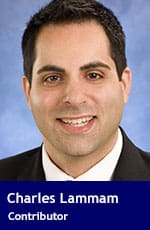 A semantic sleight of hand can’t hide the damage federal tax policy changes have had on Canada’s middle class.
A semantic sleight of hand can’t hide the damage federal tax policy changes have had on Canada’s middle class.
In a recent commentary in the Financial Post, Simon Fraser University professor Rhys Kesselman criticized the Fraser Institute’s analysis of how federal tax policy changes have increased the amount of income tax paid by middle-class families. Kesselman doesn’t contest, refute or disprove our tax analysis. Rather – in parroting the Liberal government’s talking points – he conflates taxes and transfers, and completely misses the point of our analysis.
On the campaign trail and since coming to power, Prime Minister Justin Trudeau, Finance Minister Bill Morneau and other federal officials have repeatedly claimed that the government cut income taxes on middle-class families. For example, the Liberal government’s first budget declared “the government cut taxes for middle class Canadians everywhere.”
As part of an organization focused on measuring the effects of government policy, my Fraser Institute colleagues and I set out to test this claim to see if the government had in fact lowered income taxes on middle-class families. We found this wasn’t the case for the vast majority.
While the government did reduce the second-lowest personal income tax rate (from 22 per cent to 20.5 per cent), it also eliminated a number of tax credits (provisions in the tax code that reduce a qualifying person’s income taxes), thereby increasing income taxes for Canadians who previously claimed such credits. The government eliminated the income-splitting tax credit for couples with young children, the children’s fitness tax credit, the public transit tax credit, the education tax credit and the textbook tax credit.
When all the Trudeau government’s changes are considered, 81 per cent of middle-class families now pay more in personal income taxes.
When confronted with our findings, the government didn’t dispute them. Instead, it tried to dismiss them by saying the analysis didn’t account for the enhancement to the Canada Child Benefit, a government transfer program.
And now Kesselman is parroting the government’s response.
Kesselman, who holds the Canada Research Chair in public finance at Simon Fraser University’s School of Public Policy, should know better. Taxes and transfers aren’t the same thing. Cutting taxes leaves Canadians with more of their own money. Increasing transfers gives Canadians more of other people’s money. There’s a significant difference.
And more importantly, we focused on taxes because the government’s repeated claim was that it cut income taxes on the middle class. By now invoking increased transfers, the government and Kesselman implicitly acknowledge the validity of our results.
All of this emphasizes the importance of our analysis, which brought key evidence to bear on what was a cornerstone commitment of this government to cut income taxes on the middle class. And this evidence has helped Canadians understand the reality of Ottawa’s tax changes, which run contrary to the government’s rhetoric.
The government has now changed its messaging on this issue. Yet Kesselman tried to dismiss our study with the same erroneous criticism. That does a disservice to Canadians.
Charles Lammam is director of fiscal studies and co-author of the Fraser Institute study Measuring the Impact of Federal Personal Income Tax Changes on Middle Income Canadian Families.
Charles is a Troy Media Thought Leader. Why aren’t you?
The views, opinions and positions expressed by columnists and contributors are the author’s alone. They do not inherently or expressly reflect the views, opinions and/or positions of our publication.

